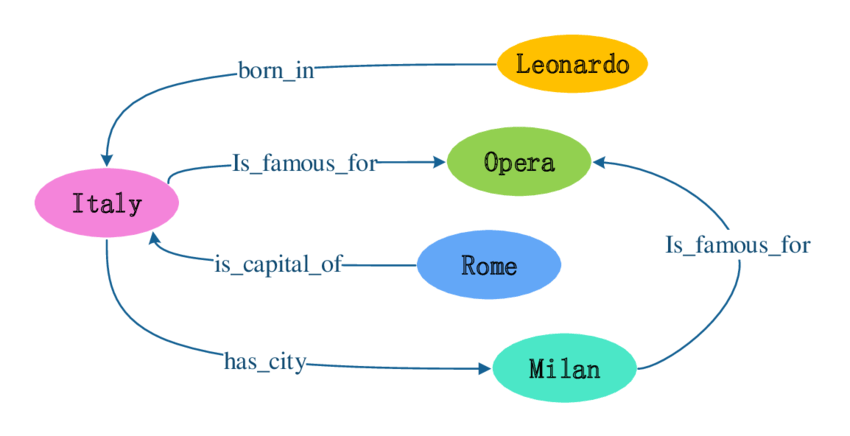Is LSI, latent semantic indexing keywords a ranking factor? Can sprinkling LSI keywords help with on-page SEO?
“Um… First of all, we have no concept of LSI keywords. So that’s something you can completely ignore. I think it’s interesting to look at LSI when you’re thinking about understanding information retrieval as a theoretical or computer science topic. But as an SEO you probably don’t need to worry about that.”John Mueller from Google
Understanding LSI Keywords

LSI keywords are terms and phrases that are conceptually related to your primary keyword. For example, if your main keyword is “coffee,” related terms might include “beans,” “brew,” or “caffeine.”
These keywords help search engines interpret the content’s overall theme and match it to relevant search queries.
Google explained in its How Search Works resource:
“To return relevant results for your query, we first need to establish what information you’re looking forーthe intent behind your query.”
Once intent has been established:
“…algorithms analyze the content of webpages to assess whether the page contains information that might be relevant to what you are looking for.”
They also mentioned that:
“The most basic signal that information is relevant is when content contains the same keywords as your search query. For example, if those keywords appear in the headings or body text of a webpage, the information might be more relevant.”
Reading this, one may infer that there may be some casual importance placed on LSI keywords.
LSI Keywords: Is it that Important?
Nonetheless, the SEO community concluded that Google doesn’t use latent semantic indexing (LSI) because it’s old and was built for smaller data sets.
However, it does focus on understanding the meaning of words. Instead of LSI, Google uses tools like Knowledge Graph, NLP, and AI to understand what users want.

Google’s Knowledge Graph is a database that stores information about entities like people, places, and things, and how they are connected. It helps understand relationships between concepts.
When you search for a public figure, brand, or place, Google often displays a Knowledge Panel with relevant facts drawn from this database, like links, images, and structured information.
Example: A search for “Leonardo da Vinci” will return information on his life, artworks, and inventions, pulled from the Knowledge Graph to present a detailed overview
The Knowledge Graph and semantic search work hand in hand to give users the most accurate and meaningful search results.
Here’s how they interact in simple terms:
- Semantic Search Uses the Knowledge Graph for Context: When you type a query, Google taps into the Knowledge Graph — a giant database of people, places, things, and how they connect. This helps the search engine figure out what you’re talking about and suggests relevant content.
- Knowledge Panels and Featured Snippets: If Google recognizes a specific entity (like a person or company), it can display a Knowledge Panel or featured snippet with key facts pulled from the Knowledge Graph.
- Matching Intent with Context: For example, if you search “Paris,” Google uses semantic search to decide whether you mean the city of Paris or Paris Hilton. It looks at the rest of your search and other factors to serve the right results.
Natural Language Processing (NLP) enables Google to interpret the meaning behind words in content and queries.
For example, if you search for “best laptop for gaming,” Google will look beyond just the words “gaming laptop” and show results with related content like product reviews, performance comparisons, or recommended brands.
Think of it like this: instead of matching just the keywords you type, Google now tries to get what you’re really asking by understanding the context.
NLP also helps with figuring out relationships between words.
If your search involves “Apple,” the engine knows whether you’re talking about the fruit or the tech company based on the rest of your query. It does this by linking topics and entities (things like people, brands, or concepts) so it can better connect the dots between what you mean and what content exists online.
Being Semantically Relevant is More Important Than LSI Keywords
Rather than worrying about LSI keywords for every page or article, relevance, and search intent should take the lead. Google’s focus is on semantic relevance to understand what users really mean.
Through semantic search, search engines interpret language and context. For instance, searching “coffee shops open now” will display places currently open, rather than just any coffee shop nearby. This shows how search engines prioritize intent over exact keyword matches.
Semantic keywords are related terms that help Google grasp the broader scope of your content. If you write about “workout routines,” for example, relevant terms might include “strength training,” “fitness goals,” or “cardio exercises.” These related phrases signal that your content covers multiple dimensions of the topic.
Using these types of keywords ensures your content ranks for a wider variety of searches, not just queries matching exact words.
For optimal SEO, it’s best to naturally integrate semantically relevant keywords throughout your content. This approach makes your content more useful, easier for search engines to understand, and more likely to appear in relevant search results.
How to Find Semantically Relevant Keywords?
There are several ways to find semantically relevant keywords:
- Google Autocomplete: When you begin typing a keyword into Google’s search bar, the autocomplete feature suggests related terms.
- Google’s Related Searches: After entering your primary keyword into Google, scroll to the bottom of the search results. The “Related Searches” section is a goldmine of potential keywords.
- People Also Ask: Google’s “People Also Ask” section provides related questions that users search for. These questions can reveal additional keywords relevant to your topic.
- Google Trends: Simply enter your main keyword into Google Trends, and it will display related terms and trending searches.
- Analyze User Intent: Understanding what people actually want when they search is key to using keywords effectively.
Here are three main types of search intent:
- Informational: The user wants to learn something (e.g., “how to bake a cake”).
- Navigational: The user is trying to find a specific page or site (e.g., “Instagram login”).
- Transactional: The user intends to complete an action, like buying or signing up (e.g., “buy iPhone 13”).
By studying which types of content rank well for specific keywords, you can figure out what searchers are really looking for.
Best Practices for Using Semantically Relevant Keywords
“In my experience consulting SEO clients at our agency, we don’t pay any technical weight to ‘LSI keywords’ or even try to over-optimize semantically relevant keywords.”Marcus Neo from Threelittlepigs.Pro.
Our agency prefers to craft content that’s contextually relevant, helpful, and one that helps with conversions for the client.
Nonetheless, fishing out some semantically relevant information can be overall helpful in a “just in case” approach.
Once you’ve identified the right keywords, the next step is to integrate them naturally throughout your content.
Here’s how to do it effectively:
- Title Tags and Meta Descriptions: Include keywords in your title tags and meta descriptions. This helps search engines understand the context of your content and increases your chances of ranking for multiple related terms.
- Headers and Subheadings: Placing keywords in headers (H1, H2, etc.) can strengthen your content structure and signal to search engines that your page covers various facets of the topic.
- Natural Integration in Body Text: Incorporate semantically relevant keywords naturally in your content.
- Image Alt Text and Anchor Text: Optimizing images with keywords in the alt text, and using them in anchor texts can also signal relevance to search engines.
Bad Practices:
Whilst including semantically relevant keywords and phrases can help with your on-page SEO, highly avoid these practices:
- Keyword Overuse: Overloading your content with too many keywords can result in penalties from search engines for keyword stuffing.
- Using Irrelevant Keywords: Don’t just add related keywords for the sake of it. Ensure that each semantically relevant keyword is contextually appropriate and adds value to your content.
- Creating Spammy Content: The primary goal should always be to provide the reader with helpful content first.
Lastly, a quick mention of semantic SEO. Koray Tuğberk Gübür has also popularized the concept of semantic SEO, going beyond keywords by focusing on the relationships between topics.
His work has also popularized the concept of “topical authority”, crafting interconnected content that signals expertise to search engines.
Conclusion

Google’s John Mueller confirmed that Latent Semantic Indexing (LSI) keywords are not used in search rankings, as LSI is outdated and intended for smaller datasets. Instead, Google prioritizes semantic relevance by leveraging NLP (Natural Language Processing) and the Knowledge Graph.
Rather than focusing on LSI, SEO strategies should use semantic keywords—related terms that fit naturally within the content.
Tools like Google Trends, Autocomplete, and People Also Ask can help discover these related keywords.
You may use semantically relevant keywords naturally across titles, headings, meta descriptions, and body text. However, avoid keyword stuffing or using irrelevant terms.
Ultimately, the goal is to create helpful, contextually relevant content that meets user needs.
Google’s shift words semantic search signals that content creators have to go beyond keywords to create content that is aligned with search intent.





